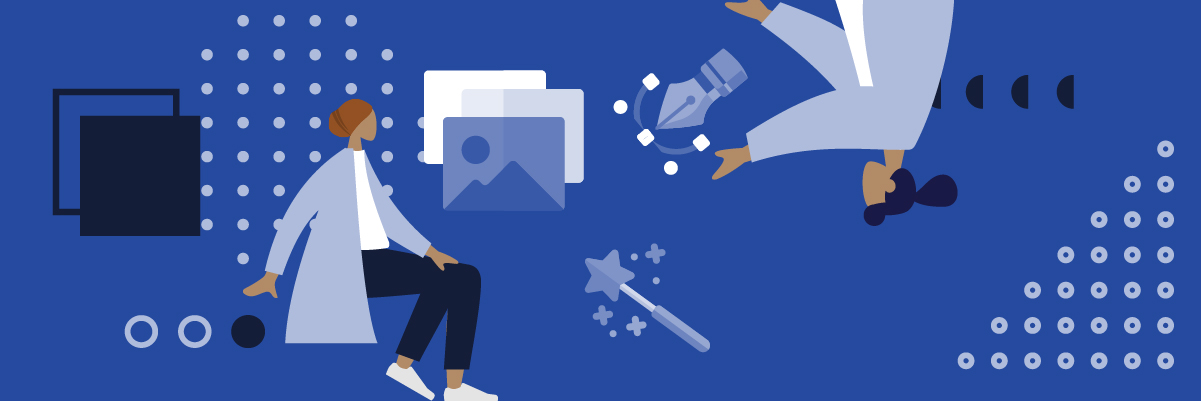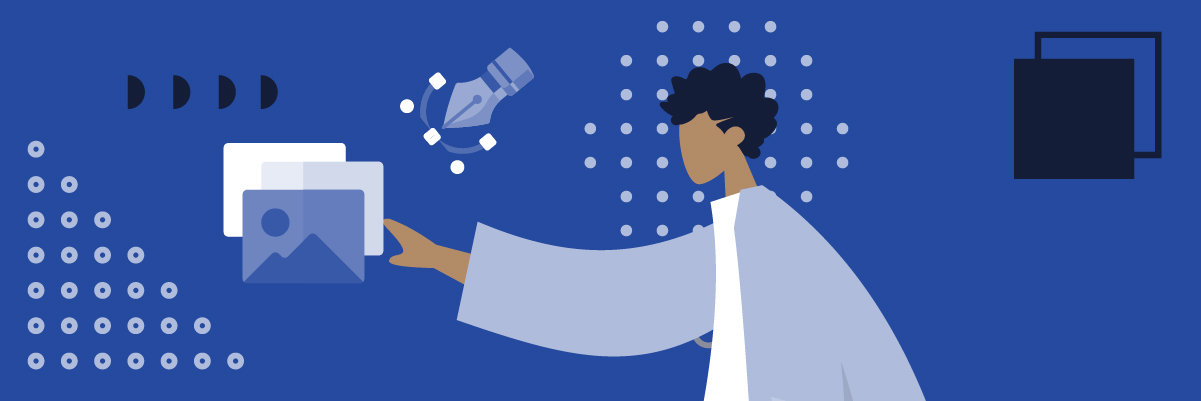Good graphic design portfolios are something professionals should work hard for since this will be their ticket to get more jobs. Having the skills and requirements needed to land a project is not enough. When employers select from a sea of applicants of graphic artists, they will look at portfolios.
Graphic design portfolios are comprised of works that showcase your skills and unique style. It will also let your potential clients show that you are knowledgeable in design techniques.
Why Do You Need a Portfolio?
The truth is, the old way of securing a job is not enough today. Answering a job post alone would not guarantee you to get hired. Whatever industry you are part of, you have to shape your skills and professional branding to prove that you are a candidate that has potential. Graphic designers need to have updated graphic design portfolios in their arsenal. These portfolios will make you stand out. We’ve rounded up some reasons why you will benefit from this.

Cover letters are not enough
Submitting cover letters and standard resumes is not enough anymore. While graphic designers still need those, there is no way some bullet points or paragraphs will show future employers your talents. On the other hand, this is exactly what graphic design portfolios do. It allows job seekers to show people their talent and encourage employers to hire them. A portfolio is also the best avenue to showcase any special skills they have.
It can save time
People sort through hundreds of resumes per job posting, and nobody has time to thoroughly go through every single one. Resumes and cover letters also do not prove the skill of professionals, whereas graphic design portfolios do exactly that. This important document not only sets you apart from your competition. It also helps you relay why you are perfect for the job since your portfolio contains solid evidence of your skills and knowledge when it comes to composition. After all, you can say you have years of experience under your belt, but if it does not reflect on your work quality, you won’t be in a good position to get hired.
Visuals will catch the attention
Nowadays, people are so used to visuals, with 91 percent preferring them over written content. Graphics, pictures, and other visual elements relay information better than words. Not only that, but with hundreds of resumes that need to be examined, recruiters would appreciate it if you have a portfolio that stands out from the norm. For example, if you applied for a make-up company’s branding job, showing the logo and marketing collaterals you previously did for beauty brands before will do a better job at letting clients know that your specialty aligns with their brand, rather than simply saying you have worked for the beauty industry before.
It will show your work story
Your journey as a graphic artist means a lot since it shapes who you are as a job seeker, and it proves that you should not be overlooked when you are applying for a job. Think of it like this: How much of your personality comes off when you simply send a resume and a cover letter? Does it tell potential employers what your graphic style is? Will it show them your specialties? Will your resume and cover letter relay that you can understand their company vision? Probably not.
Graphic design portfolios do all these things since it improves your image as a candidate by providing you a legitimate backstory that your employers will appreciate. Think of your graphic design portfolios as a narrative with a beginning, middle, and end. The strongest work should be at the start and end.
If you place all your best works in the beginning, it may leave a bad impression since the work quality will taper off as they see your other works. On the other hand, saving the best works and putting them in the last part may mean some clients would not see it. This technique will not only set you apart but also put you in the frontline when it comes to acing your job.
What Should You Include in Your Graphic Design Portfolios?
If you want to pick up clients, you need to show them your work. The great thing is, you don’t need to show them paid work. It is absolutely fine to create imaginary projects to put in your portfolio. This is something beginners and experienced graphic designers do. Here are some pointers for your graphic design portfolios.
High-quality work
When a future employer wants to see your work, you want them to have the best first impression of you. To do this, choose projects that will best represent your artistic vision and skills. When it comes to digital or physical portfolios, never skimp on the work quality. Only use high-quality images since if the image is blurry, people will think you cannot create a high-quality output for them. Make sure that your work can also be accessed quickly. If you uploaded it online, the loading time should only be below three seconds.
You can have online graphic design portfolios on your website, but it also helps to have an offline backup when the situation calls for it. Even when you are getting screened for a position that is not remote, you need to have a portfolio that shows examples of your diverse work and flexibility.
Wide range of work
Your portfolio should have at least 30 work samples that will let clients know what your style is. Showing many types of work you have completed that feature different techniques and styles will help make you stand out. Make sure to treat each sample individually, and when selecting your work, choose the ones that highlight your skill best.
Unexpected work
The first impression of your potential client is essential, but you also do not want graphic design portfolios to be plain. When people look at your portfolio, they should be impressed by your works of art from start to finish. Whenever you can, insert some unexpected elements in your graphic design portfolios.
Tell a story
Looking at your graphic design work will not tell people a story. It won’t explain what your process is, as well as your drive and inspiration. If you want to paint a clear picture of who you are as a graphic artist, you should also share the method you used in creating your best work. This can be done by inserting a short backstory of important work samples. If you want to do this, be all out. Do not put self-deprecating words. Create a format that has a positive tone throughout.
Your dream client
As a graphic designer, you have to dream big. Aim high with your portfolio and show potential clients how you would work with large brands or local businesses. Include a redesign or original design of a brand you look up to and give it a unique feel while making sure you stay true to their identity.
Tips to Make Graphic Design Portfolios Stand Out
Follow these tips if you want to ace your portfolio.

Do not include questionable work
You may be tempted to include all your works in your portfolio, especially if you allotted a huge time and effort for it, but you have to be very rational. Any project that you weren’t satisfied with, no matter how long you spend making it, needs to be left out. Every artist will experience losing a battle with their client to keep them happy and fit their brief.
When it comes to your portfolio, you should only make room for your best work. Do not be tempted to attach an explanation that you were not on board with what the client requested, and you could not talk them out of it. This will only make you look unprofessional.
Not only that, do not include all examples of the same style of product. If you have made hundreds of logos or business cards, only pick the best three or five. Maybe include a rustic brand, and include an upscale one. Your goal should be to let future employers think you can offer ability and range.
Have shareable samples
Sharing your graphic design portfolio is now easier than ever through social media or email. When you submit a portfolio, do not leave your future employer empty-handed. Make sure the link you sent them can easily be shared with others. Just as posts on social media inspires comments and shares, your graphic design portfolios should also be attractive enough to generate interest. Do not forget to place your social media handles.
Consider the format
Put research into the software you want to use to create your portfolio or the website you want to host. The best choice will be one that allows you to use high-quality work. Whatever option you choose, double-check each page and make sure it can present your work aesthetically. A gallery-style page with tons of entries works amazing for logos, but if you want to showcase important or impactful collaterals like infographics, make it full screen. Tons of websites and software offer templates and extensions you can work with.
Constantly Update Your Portfolio
Graphic design portfolios are not meant to be stagnant. Your best bet is to treat your portfolio like an evolving element. As a graphic artist, one of the best feelings you’ll get is when all the works in your portfolio perfectly reflect your vision. Update it as often as your focus and skills change, and remove filler pieces as you go. Want to improve your portfolio? Chat with us.










